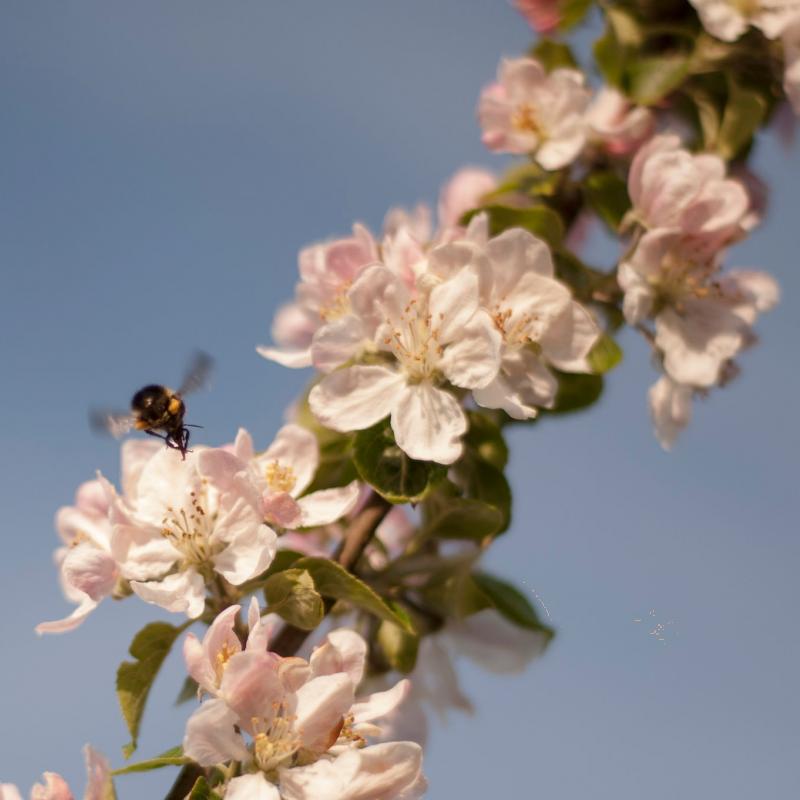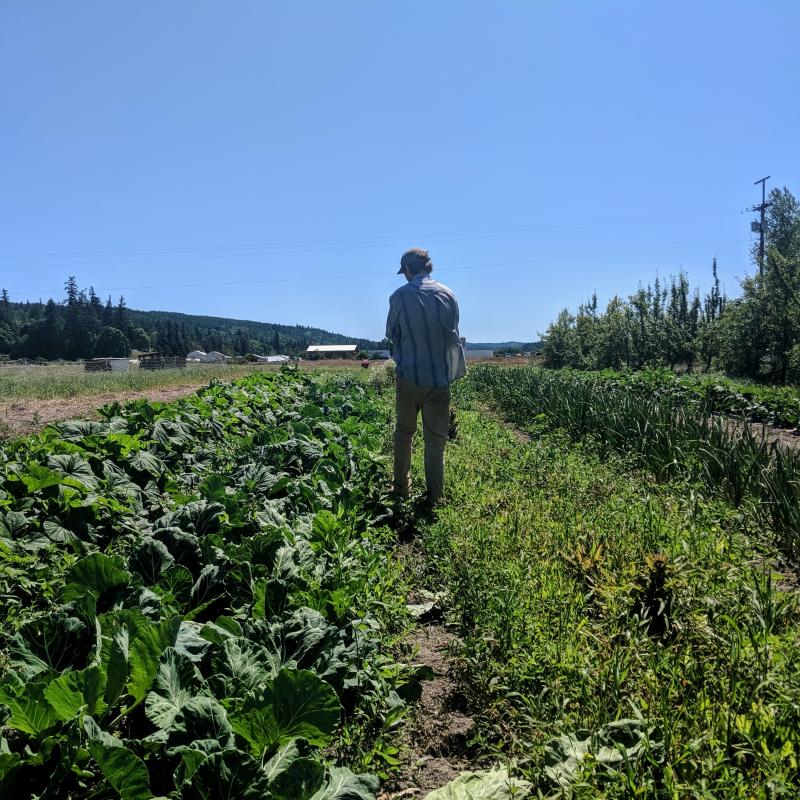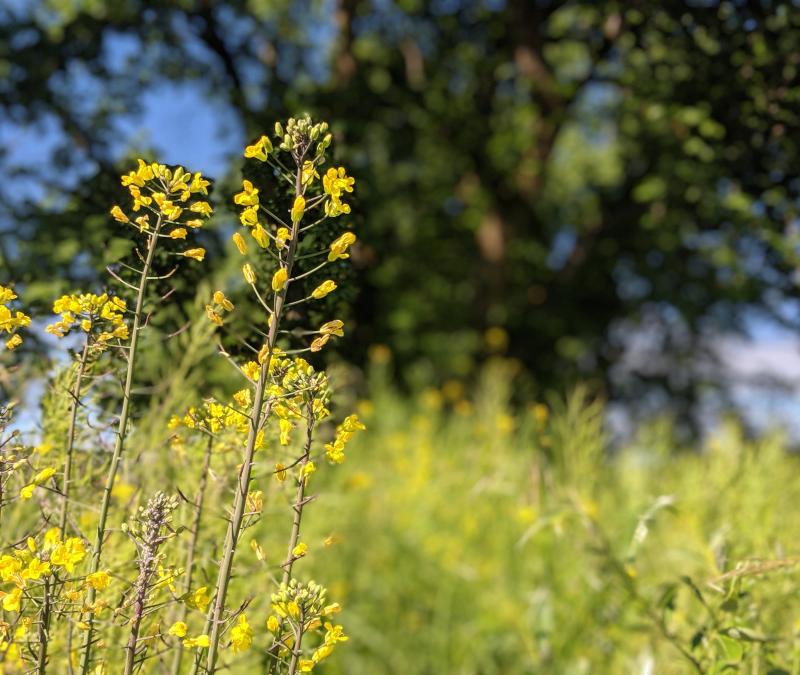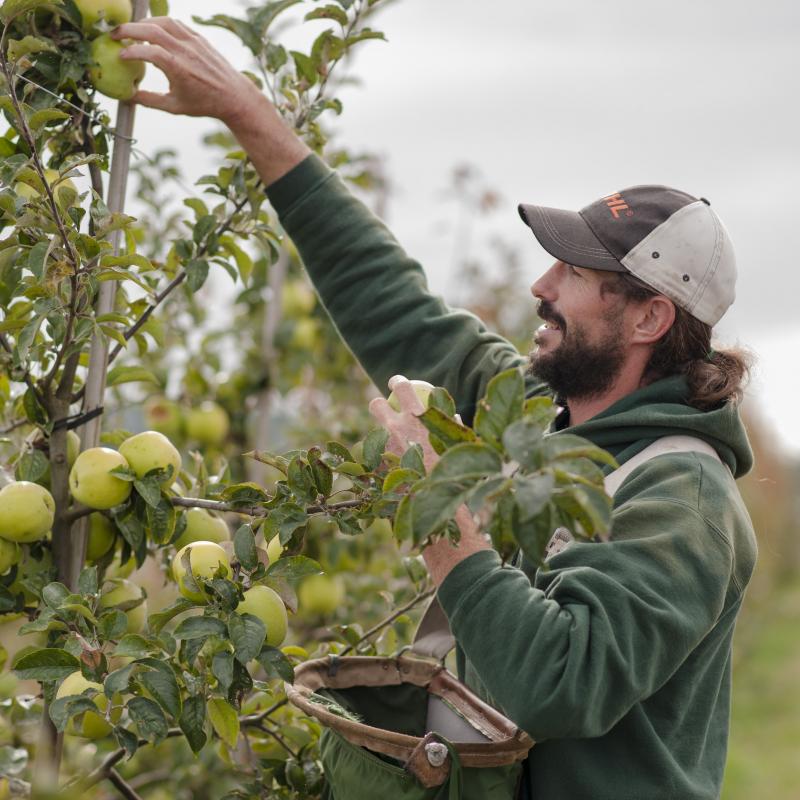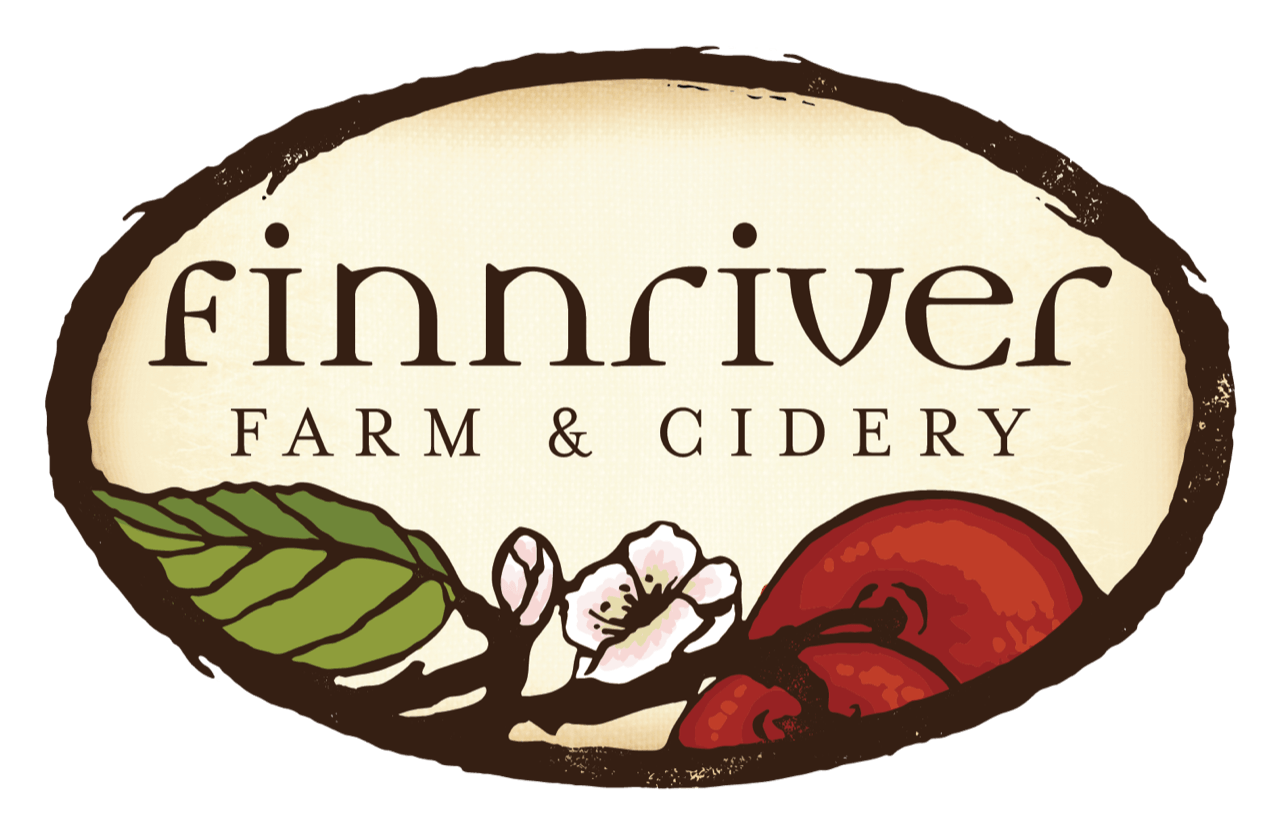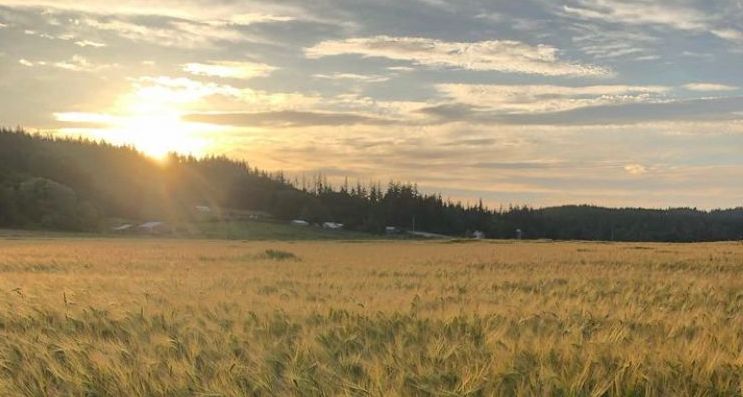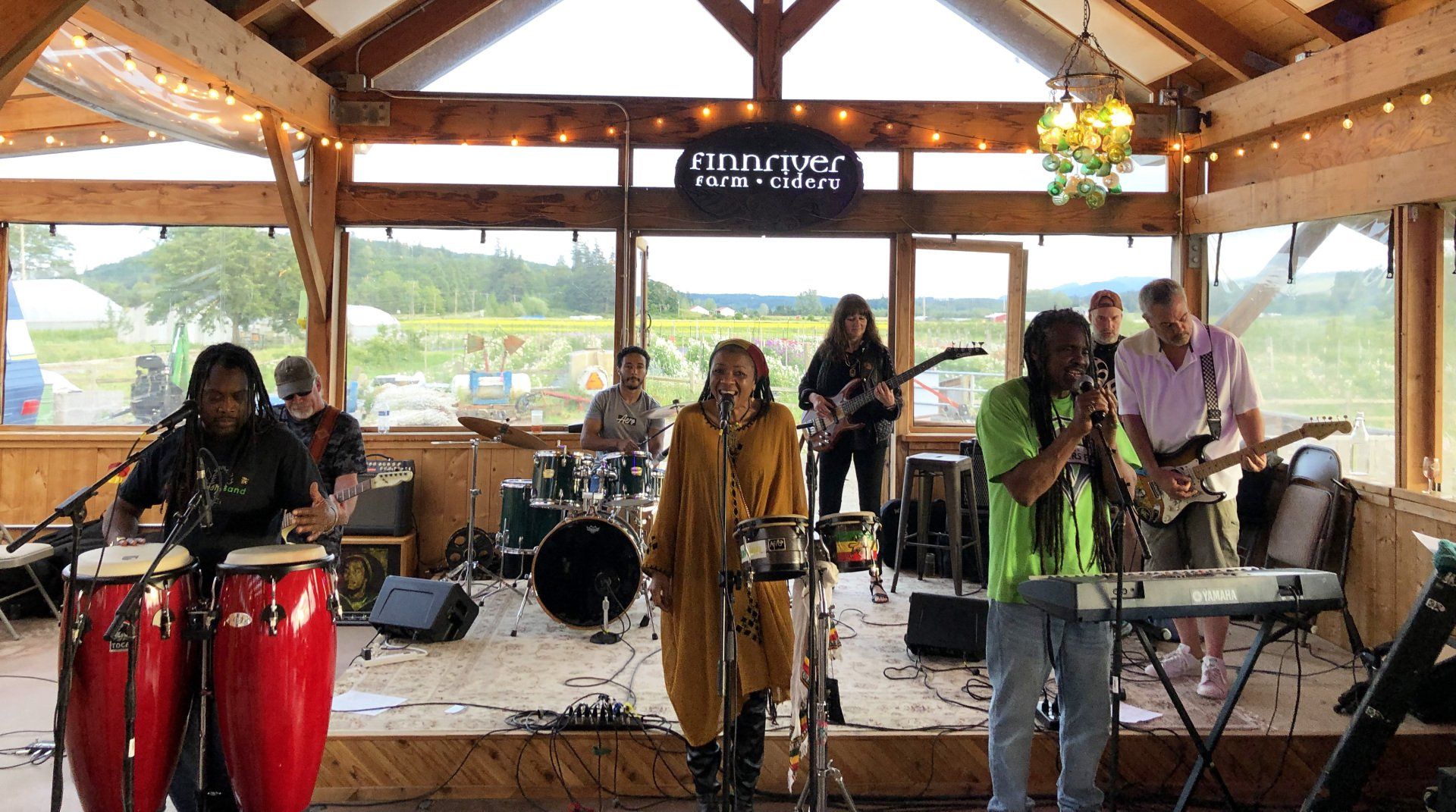T h e S t o r y B e h i n d t h e C i d e r
“Field of Hay” is one of those ciders that garners attention because of the story, and while hay and cider might not seem like the most obvious pairing at first, it is less surprising when one considers the history of cidermaking. Circa 300-400 years ago, before canvas was readily available for rack cloths, apple presses were made with filtration systems of wood and straw. Cidermakers took great care in stacking the layers of straw and wood in an artful process referred to as “building the cheese”. The apple juice was then pressed and squeezed through this intricate mesh of straw. Although the historical methodology supports the notion, it isn’t actually the sole inspiration behind this crisp and earthy cider.
At Finnriver, cider is the art we’ve chosen to build community, create small scale rural economy and work with other stewards of the land in a collaborative effort. All of our Pollinator Series ciders are meant to highlight the efforts of Finnriver land tenants who share both field space on this 50 acre farm and a common purpose to grow, educate and advocate around wise land use. Field of Hay was the last Pollinator cider to debut because it proved difficult to figure out what to make that would highlight the work of a grain grower and still be gluten free!
Keith of the Chimacum Grainery farms in a thoughtful way, like the perennial no-till wheat he has planted in collaboration with the WSU Bread Lab, which means producing wheat with extra care for the land’s microbiology. He’s also keen on cover-cropping, grazing rotations and other organic approaches that sustain soil. “So I wanted to do a dirt cider, but the marketing department took issue with that,” Head Cidermaker Andrew Byers jokes about the brainstorming process of how to represent the Grainery partnership in a cider. “Ultimately, I wanted to capture some of the best things about farming, like the smell of a freshly cut field. When you’re a farmer, there is an intimate and deep connection that smell represents, as the final step in the culmination of so much care.”
Some years, Keith grows hay and then lets the field set fallow. On one such year the solution of how to tell the story of this land partner and simultaneously harken to the history of cidermaking became evident. Keith brought over a magnificently ‘artisinal’ bale of hay—freshly cut from a nearby field— and the cider barn crew flaked and inserted it into a tank full of cider (scan the QR code for a video of this process). After a couple of days, the cidermakers agreed that it had hit its mark with the perfect out breath of hay. It was a delicious taste of the land: crisp, refreshing and earthy, like walking through a field of freshly cut hay.
This year’s hay bale comes from our neighbor across the creek, Barry Brown, whose family farmed the dairy land here for many decades. We are pleased to make this connection between valley hay, good neighbors and drinkable cider!
We hope that this bottle invites people to the table and creates conversation about sustainable farming and small scale organic economics, that it weaves the story of the community here on the land, and perhaps even transports you to a warm summer day in a freshly cut field of hay.
